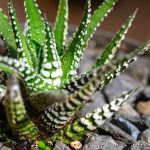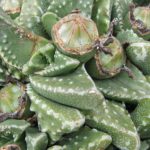For those seeking a fuss-free succulent to enhance their indoor or outdoor space, the breathtaking cathedral window haworthia could be just what you need! Explore a comprehensive guide to these stunning plants and how to nurture them here.
A native of South Africa, haworthia is a charming perennial succulent that thrives well both indoors and outdoors, pending suitable hardiness zones. While there are various haworthia species, one standout is the cathedral window plant.
Regardless of the specific variety you opt to cultivate, all haworthia plants require comparable care protocols, although their visual characteristics may differ. These delightful succulents serve as fantastic indoor plants, sharing akin growth conditions with aloe and echeveria varieties.
Similar to other succulents, haworthias exhibit a slow growth rate, gradually maturing over time. This gradual growth pattern makes them an ideal choice for gardeners of all levels, whether novice or experienced. Discover all you need to know about maintaining and nurturing cathedral window haworthia plants effectively.
| Plant Type: Perennial | Family: Asphodelaceae |
| Genus: Haworthia | Species: Cymbiformis |
| Plant Spacing: 3 inches + | Native Area: Africa |
| Sunlight Exposure: Medium | Plant Height: 3 to 5 inches |
| Water Requirements: Medium | Plant Depth: 3 to 5 inches |
| Hardiness Zone: 9-11 | Maintenance: Low |
| Soil Type: Sandy, well-draining | Pests: Mealy bugs, aphids |
| Diseases: Fungal Diseases |
About Cathedral Window Haworthia
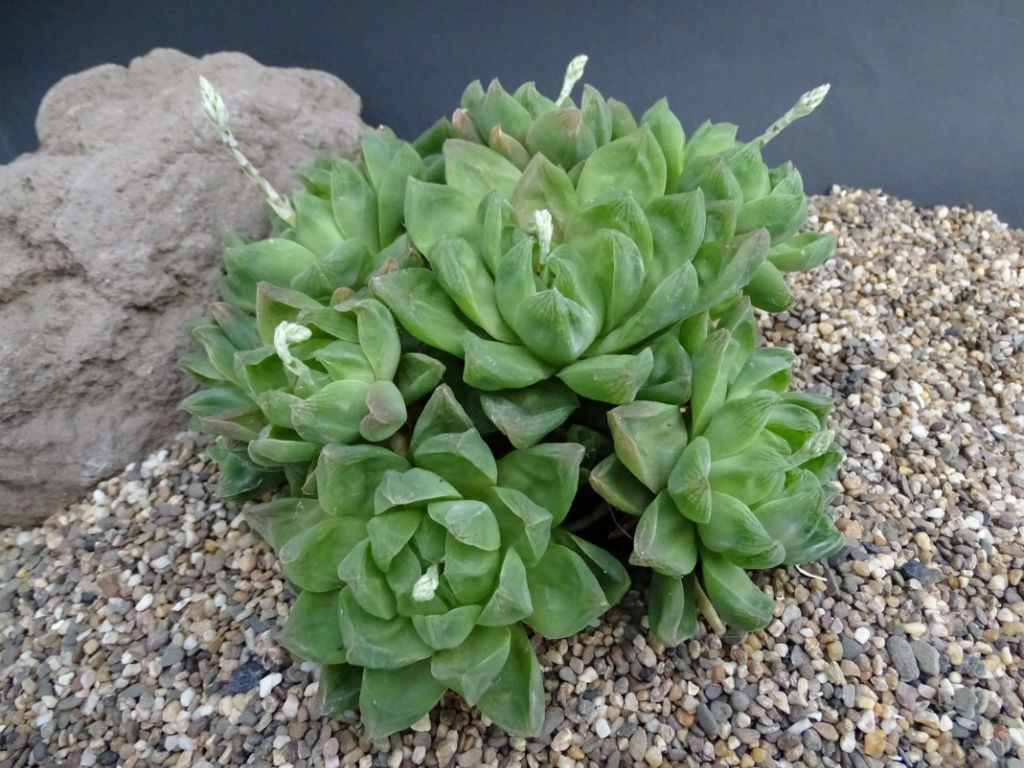
Cathedral window haworthia (Haworthia cymbiformis) hails from Africa and belongs to the Asphodelaceae family, comprising 70+ unique species.
The plant earns its name from its semi-translucent leaf tips, with its scientific name meaning “boat shape,” symbolic of its appearance resembling a cathedral window.
This succulent showcases a rosette form with thick, green leaves that turn semi-translucent towards the ends, resembling stained glass. It blooms small white or pale pink flowers.
Propagation
You can effortlessly propagate your succulent collection with these methods.
Division
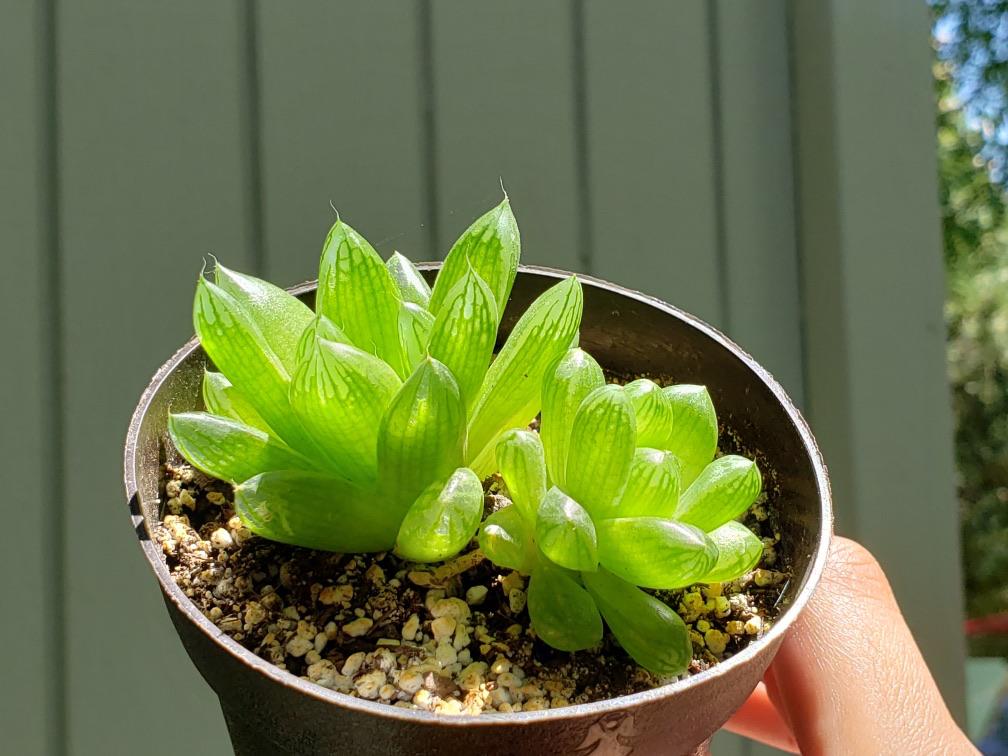
Propagation of haworthia can be an affordable method of expanding your plant collection. A cost-effective approach involves extracting offsets from mature haworthia plants, tiny growths connected to the main plant by underground lateral roots.
One significant benefit of propagating haworthia through offsets is the prevention of overcrowding, which may lead to various plant issues. Before embarking on the propagation process, gather the necessary tools and supplies including a sharp knife, scissors, or gardening shears, pots with succulent soil, and water.
Unpot the mature haworthia plant delicately to reveal the offsets and their lateral roots. Use a cutting tool to separate the offset from the main plant, then transfer it to a new pot and water lightly. Return the main haworthia to its original container and place the new plant in a well-lit area with indirect sunlight, ensuring the soil is kept moist but not waterlogged.
Cuttings

Another method to propagate haworthia is through leaf cuttings. Prepare pots filled with potting soil and select a healthy rosette. To begin, carefully cut a leaf from the lower part of the plant to minimize damage and interference with surrounding foliage or plants. Plant the cut leaf directly into the soil, lightly water it, and ensure it receives indirect sunlight for a few hours daily.
Regularly inspect the cuttings for signs of overwatering, excessive sunlight exposure, or drying out, as unfavorable conditions may lead to diseases and cutting failure. Root establishment typically occurs within a couple of weeks, during which the plant’s growth may be slow, often retaining a single leaf appearance for an extended period.
Seed
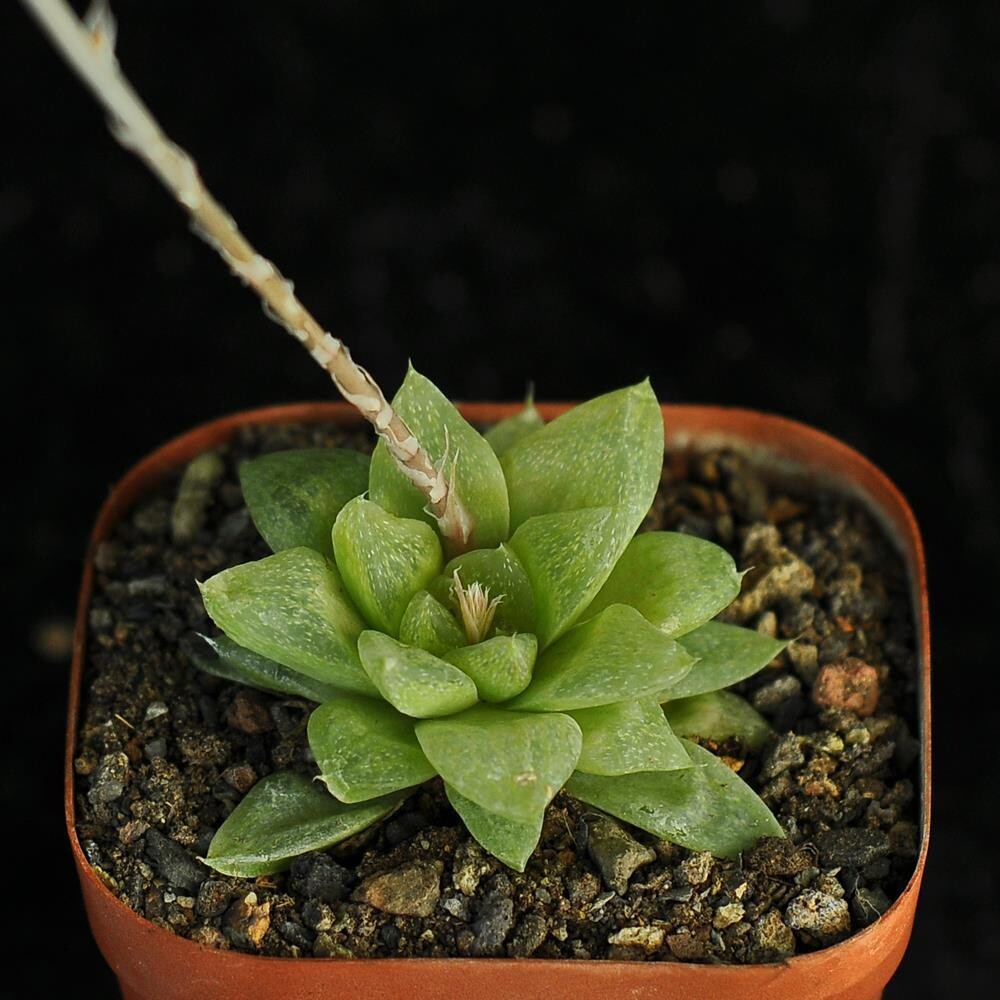
Growing haworthia from seeds can be a challenging yet rewarding endeavor. These plants produce small seeds contained within pods formed post-flowering. As haworthia plants are not self-pollinating, manual pollination is required. To achieve this, two simultaneous flowering haworthia plants of the same species are necessary.
To pollinate, carefully transfer pollen from the anther of one plant to the stigma of another. Once the pods mature, collect the tiny seeds by techniques like using clear tape to catch them. Plant the seeds in pots filled with sandy soil, provide indirect sunlight, and diligently monitor for diseases as the seeds germinate within 1 to 2 weeks.
How to Grow
Creating optimal growing conditions for haworthia is essential for their flourishing, similar to the care regimen for aloe plants.
Light
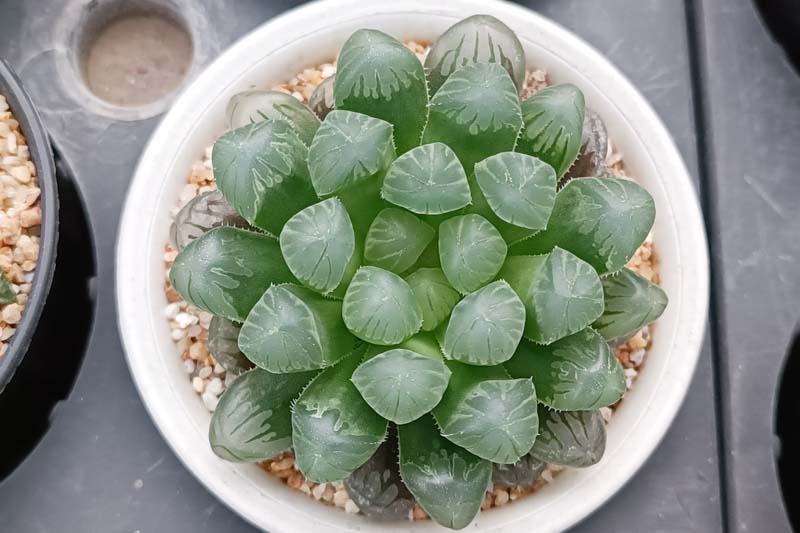
To thrive, this plant needs morning sun and afternoon shade, or continuous bright indirect sunlight during the day.
This particular haworthia plant thrives well in locations that receive varying degrees of sunlight. When it comes to outdoor growth, it favors direct exposure to the morning sun followed by some shading in the afternoon. Conversely, indoor planting requires exposure to bright indirect sunlight combined with partial shade throughout the day.
Ensuring your succulent receives a minimum of 4 hours of partial shade daily will contribute to its overall health and happiness. In their usual habitat, these plants are often discovered in the shadow of rocks and other objects. Providing afternoon shade can reduce the risk of foliage burns. Observing the plant’s response to sunlight levels will quickly reveal if adjustments are needed.
The appearance of the leaves is directly impacted by the amount of sunlight they receive. Healthy specimens exhibit thick, vibrant green leaves. If the leaves appear elongated and pale green, insufficient light is likely the issue. On the other hand, overly long leaves with a brownish or purplish hue are indicative of excessive light exposure.
Soil
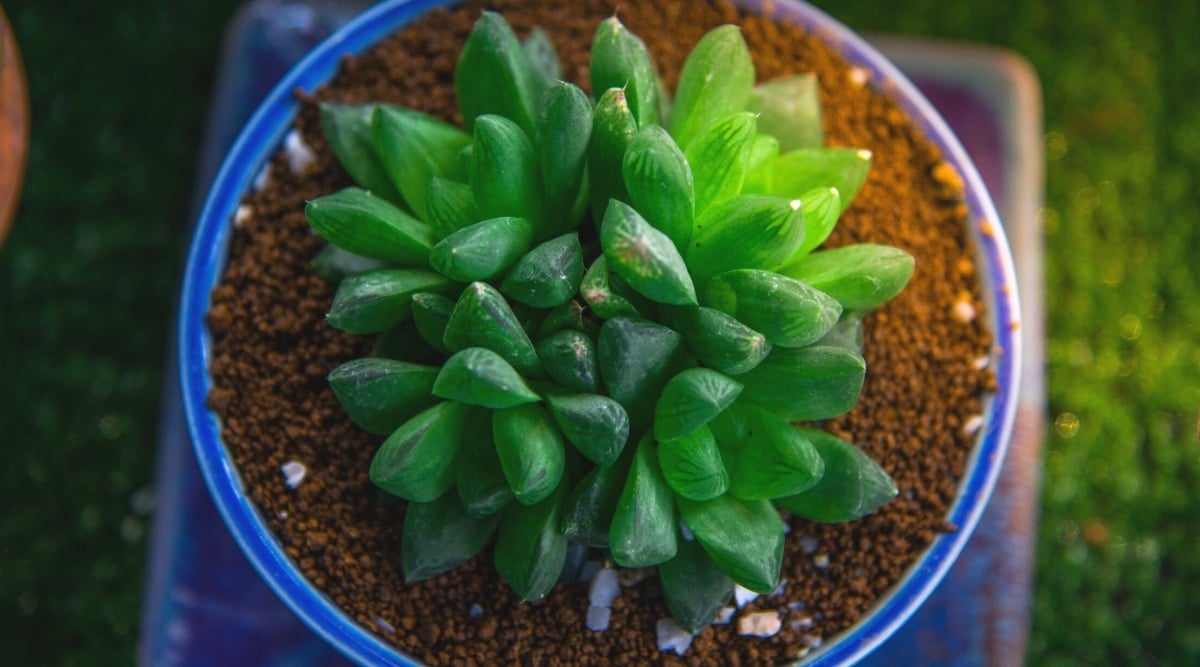
Utilize well-draining soil, such as a succulent/cactus mix or a custom blend for planting.
Plant your haworthia in sandy, well-draining soil. Opt for specialized potting mixes for succulents and cacti or create your own blend. An effective concoction can consist of equal parts potting mix and sand, gravel, pumice, or similar gritty materials.
Regularly inspect your soil to ensure adequate drainage as succulents dislike waterlogged conditions. Poor drainage may result in fungal infections and pest issues. Enhance drainage capabilities by incorporating perlite, pumice, sand, or grit into the soil mixture.
Watering
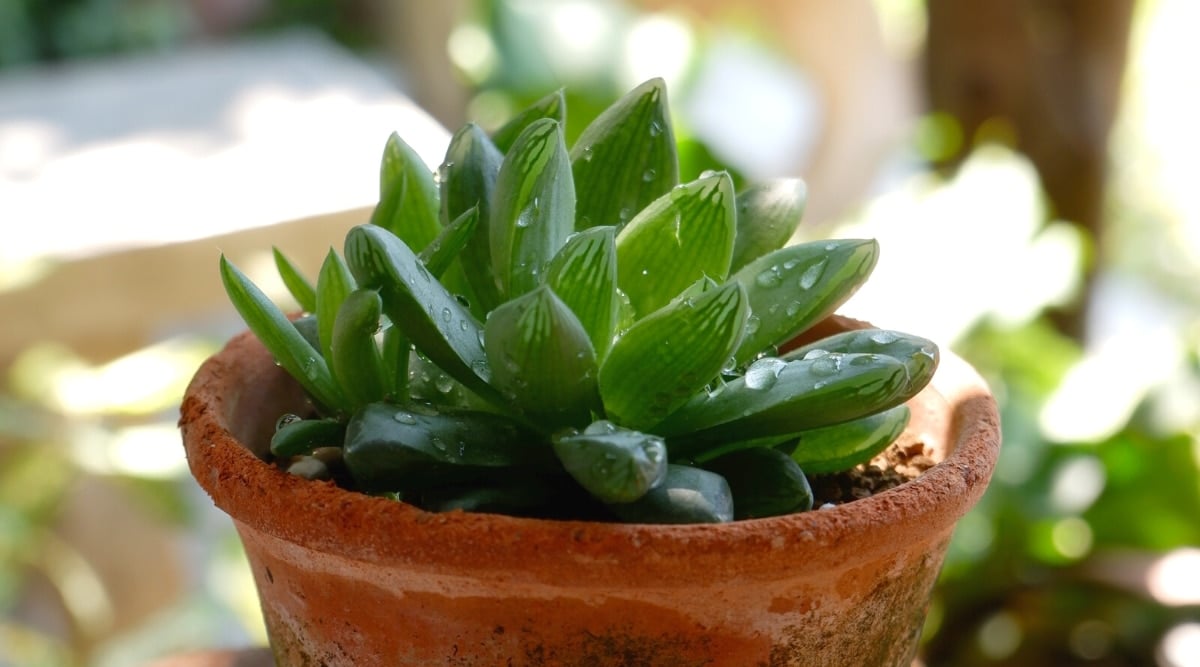
Given their innate ability to withstand drought, these succulents can endure extensive periods without water. It’s advisable to water them when the top inch of soil has fully dried. Similar to many succulents, allowing the soil to dry out between watering sessions is key.
For outdoor plants, adhere to a set watering routine to prevent overwatering. Ideally, watering should occur once every 2 weeks at a minimum.
Indoor haworthia plants should be watered approximately every 3 weeks, with the exact frequency dictated by temperature and humidity levels. Monitor the plant regularly for signs of dehydration like wilting leaves or parched soil.
These succulents store water reserves in their leaves, enabling them to withstand extended dry spells. To emulate their natural environment, reduce watering in the fall and winter seasons. Only water the plant enough to maintain turgid leaves. When watering, focus on the soil surface to avoid rot-inducing moisture accumulation within the rosette.
Pruning
One of the tasks in caring for haworthia involves occasional pruning to eliminate yellowing or brown leaves. Brown leaves can be gently removed without causing damage to the plant, while flower stalks should be pruned once they have wilted.
Fertilizer
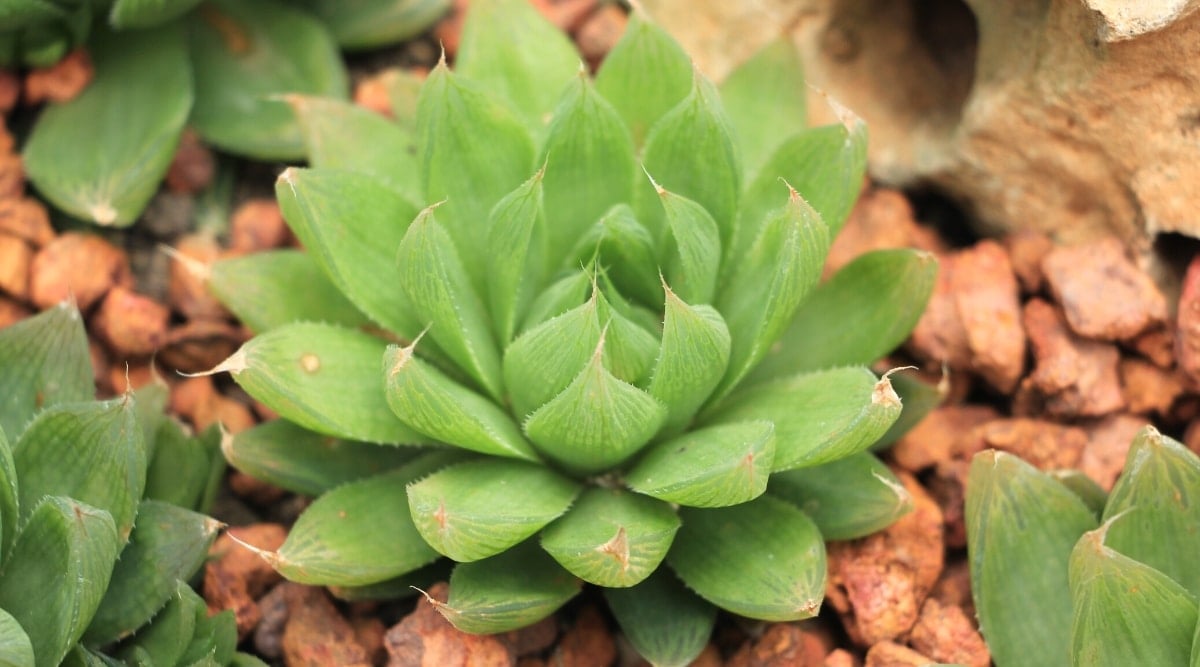
Generally, these plants are not heavy feeders and do not need regular fertilizing. On the occasion that you do choose to fertilize, aim for the spring and summer seasons. Hold off on fertilizing during winter and fall when growth slows. Opt for a fertilizer formulated for succulents or cacti, following the instructions on the label carefully.
Temperature

Haworthia thrives in warmer climates, ideally around 70 to 95 °F, but can withstand temperatures as low as 50 °F. If temperatures dip below 40 °F, the plant may suffer damage. This adaptability makes it a suitable houseplant as it isn’t affected by temperature fluctuations in your home.
For regions in USDA zones 9 to 11, haworthia can be planted outdoors year-round without the need for winter relocation. However, in zones 8 or colder, it’s advisable to bring these succulents indoors before temperatures drop significantly.
Height and Spread

The Cathedral Window haworthia remains small and slow in its growth, usually growing to about 3 inches tall, with its width dependent on container size and plant condition.
Offshoots of this succulent take their time to emerge. In optimal conditions, a complete cluster may develop within a couple of years, not surpassing 6 inches, often requiring repotting after 1-2 years.
Due to its size, this plant can thrive in a small pot for an extended period, making it an ideal addition to window sills, bathroom shelves, or bookcases.
Repotting
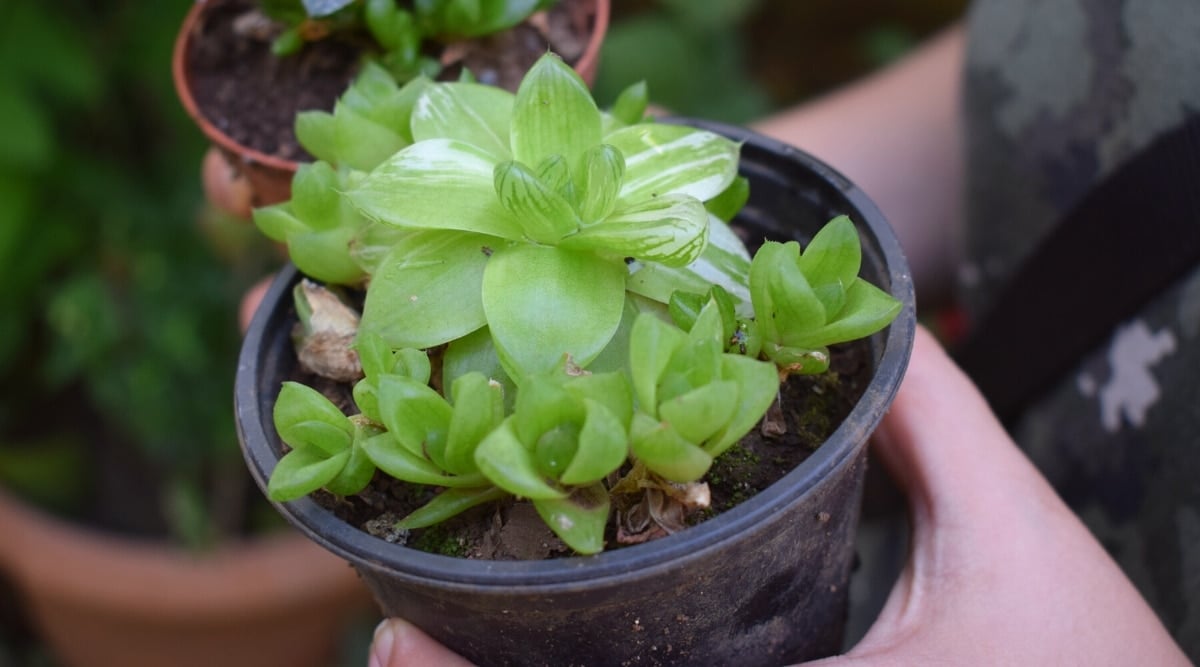
Given their small stature, reaching 3 to 5 inches tall, these slow-growers can thrive for a considerable period in their initial pots. Commonly cultivated in compact indoor containers, dishes, or planters, offshoots can gradually emerge from the main plant.
As time passes, containers might become overcrowded, signaling the need for repotting every 3 to 5 years. Choose to either transfer to a larger pot or remove offsets and return it to its original container. Regardless, fresh soil is essential, providing the plant with a revitalized environment to flourish.
Blooming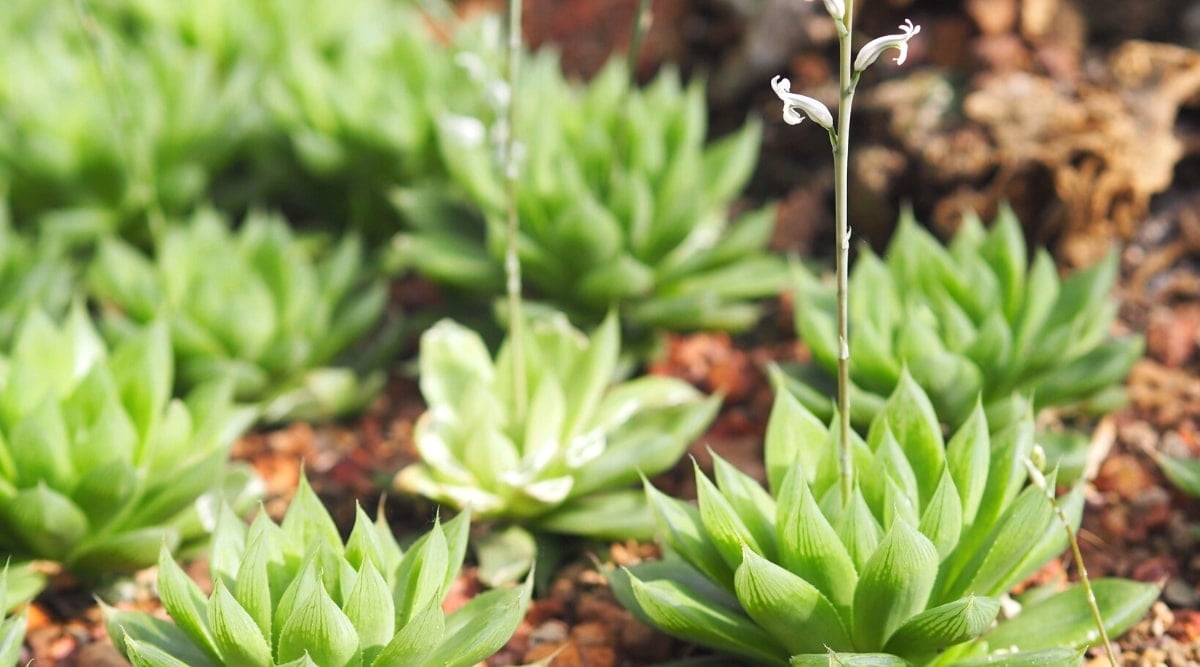
The production of a stalk with white to pale pink flowers characterizes the haworthia. These petite flowers perch around 8 inches above the succulent. Once the flowering on the stalk concludes, it will wither and should then be promptly removed from the plant.
Blossoming occurs annually for these succulents, typically gracing the plant in the summer through early fall. Blooms are only forthcoming if the plant is thriving in optimal conditions, acting as a barometer for its overall happiness and well-being.
Common Problems
While this resilient succulent is generally untroubled by issues, challenges may arise if it is subjected to unsuitable conditions or a sudden environmental shift. Here are a few commonplace problems that may manifest:
Yellowing Leaves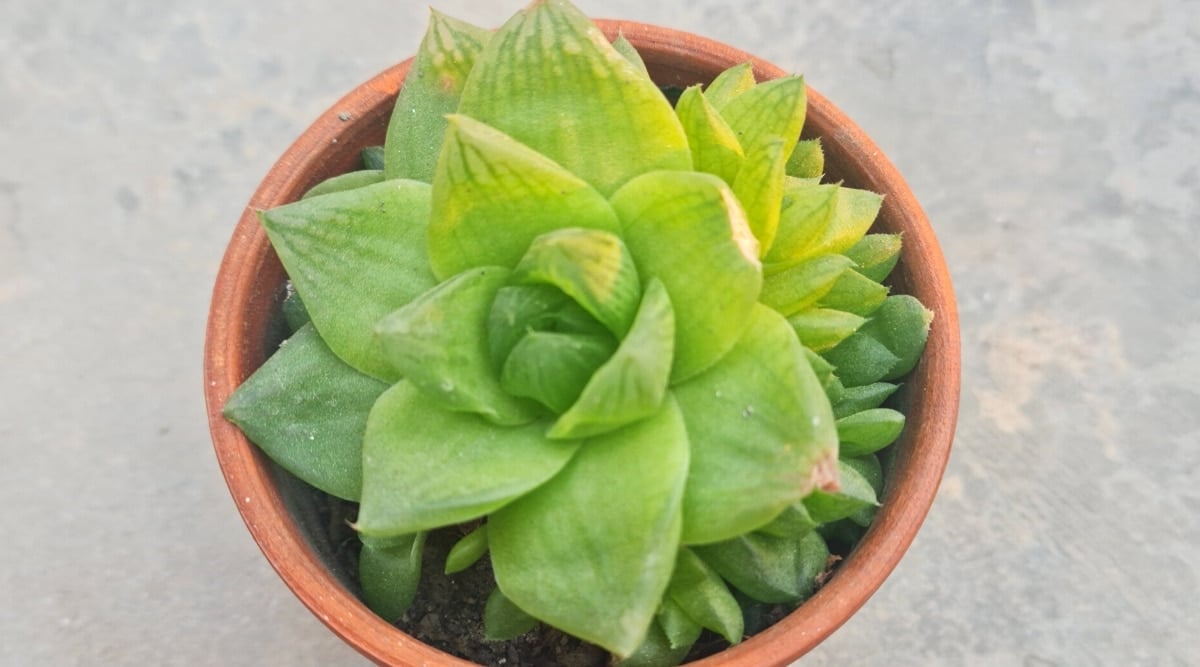
If the leaves of your haworthia start yellowing, it could indicate excessive sunlight exposure. Red or white-hued leaves may also signify an abundance of sunlight. Relocate your plant to a shadier environment and monitor it for signs of recovery or any prolonged symptoms.
Drooping Leaves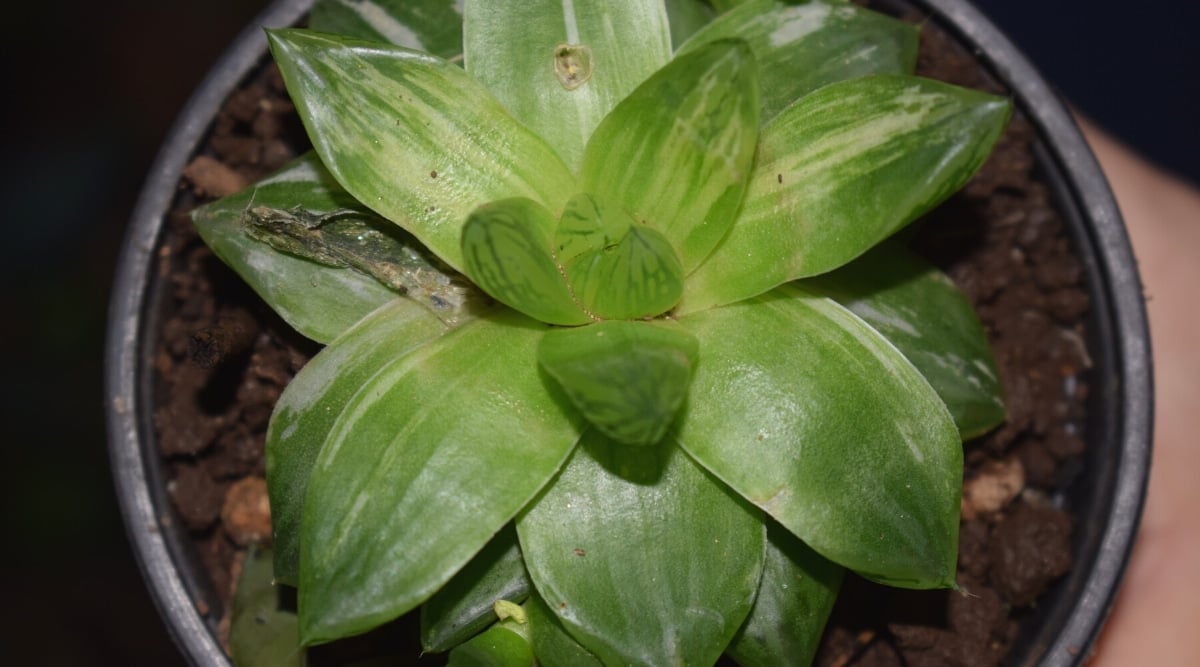
A droopy or shriveled appearance in the leaves could be a sign of underwatering, or conversely, overwatering leading to root rot. If the soil remains wet and drainage is impaired, it sets a conducive stage for root rot. Water the succulent only when the soil is dry or integrate gritty substances to enhance drainage.
Mealybugs
Mealybugs are a common infestation on various houseplants, and if you detect them on your haworthia, immediate action is necessary. Firstly, isolate the plant from others as mealybugs are identifiable by their small size, oval shape, and white cottony coating. Potential control methods include using a cotton swab with rubbing alcohol to address a minor infestation, while severe cases may necessitate employing insecticidal soap.
Frequently Asked Questions
Are Cathedral Window Haworthia Poisonous?
No, all haworthia are safe to have around pets,
Safety Around Cathedral Window Haworthia
It’s essential to exercise caution with plants around small children and pets to prevent any issues, although haworthia succulents, including Cathedral Window Haworthia, are safe for everyone.
Cathedral Window Haworthia’s Growth Ease
These succulents are beginner-friendly and thrive easily both indoors and outdoors, making them a popular choice. Maintaining them is simple and doesn’t demand extensive attention, perfect for new succulent enthusiasts.
Post-Flowering Care for Cathedral Window Haworthia
Cathedral Window Haworthia is not affected by monocarpic behavior, ensuring its survival post-flowering. After blooming, the plant remains healthy; however, you can prune the dying stalk once the flowering cycle ends.
Final Thoughts
Cathedral Window Haworthia is a delightful succulent suitable for beginners and seasoned gardeners alike. Whether indoors in colder areas or outdoors in warmer climates, these unique plants flourish with minimal care once established.
Position them in well-lit spots, such as south-facing windows or shelves, to ensure their happiness. Embrace their presence without worrying about intricate care routines. Happy cultivating!


